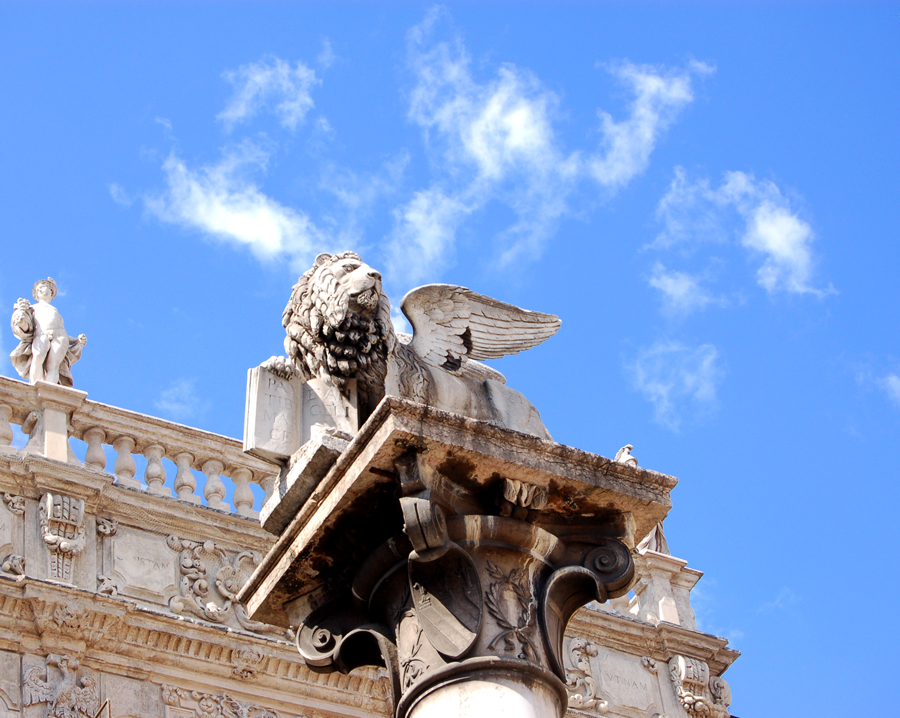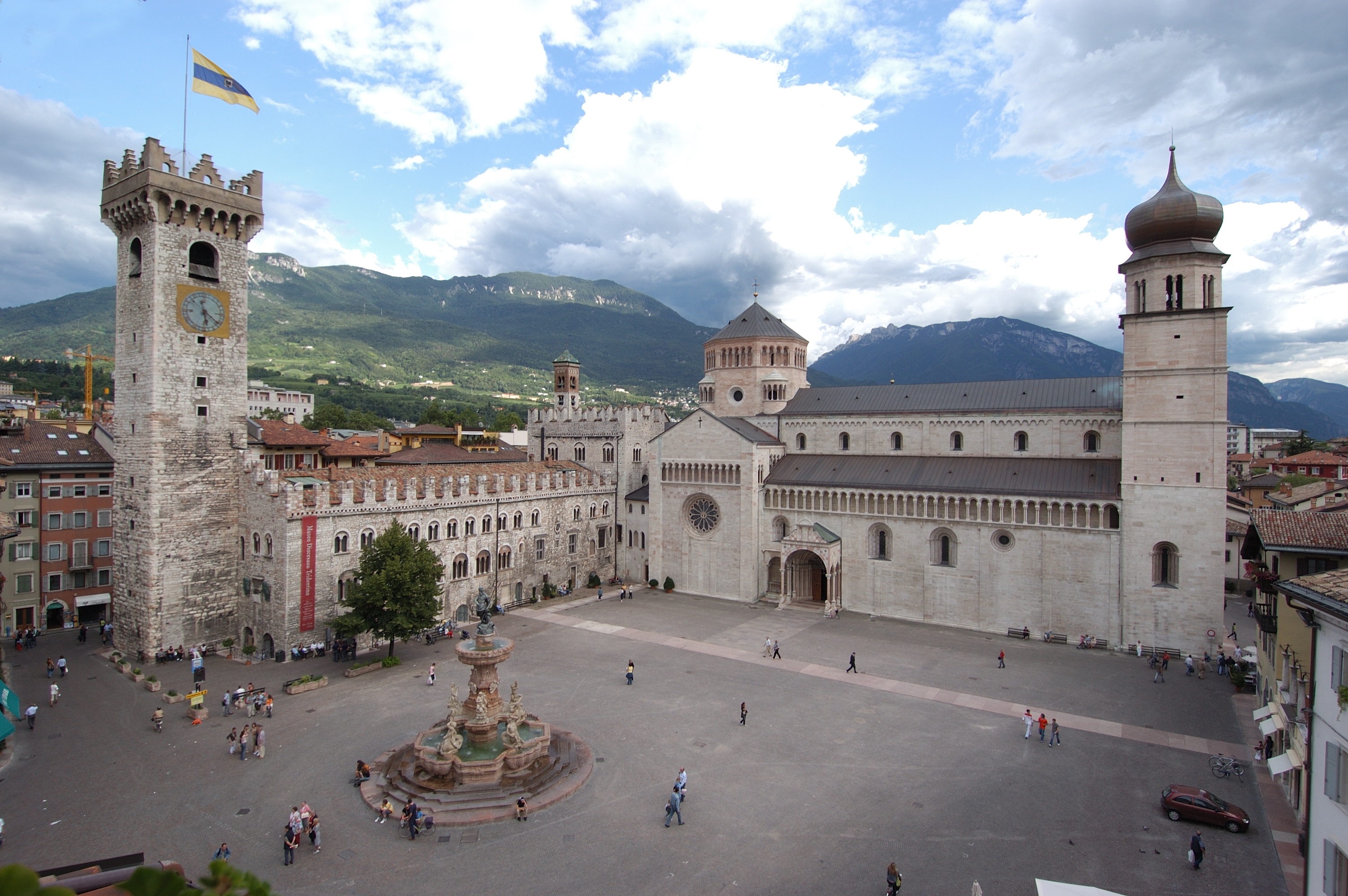|
Feltrino
Feltre (; ) is a town and ''comune'' of the province of Belluno in Veneto, northern Italy. A hill town in the southern reaches of the province, it is located on the Stizzon River, about from its junction with the Piave, and southwest from Belluno. The Dolomites loom to the north of the town. An area incorporating Feltre and 12 contiguous municipalities is known as . In 2014, the Feltrino area was formalised in the Unione Montana Feltrina (Feltrino Mountain Community). History It was known in Roman times as Feltria and described as an ''oppidum'' by Pliny, who assigned its foundation to the Alpine tribe of the Rhaetians. The city obtained the status of ''municipium'' in 49 BC with its citizens inscribed into the Roman tribe of ''Menenia''. In spite of its rigorous climate, which led a Roman author, perhaps Caesar, to write: ''Feltria perpetuo niveum damnata rigore'' ''Atque mihi posthac haud adeunda, vale'' Feltria lay on a Roman road mentioned in the Antonine Itinerary a ... [...More Info...] [...Related Items...] OR: [Wikipedia] [Google] [Baidu] |
Province Of Belluno
The province of Belluno (; ; ) is a Provinces of Italy, province in the Veneto region of Italy. Its capital is the city of Belluno. It has an area of and a population of about 198,000 people. Geography Situated in the Alps, the province of Belluno consists almost entirely of mountainous terrain. It encompasses the natural and historical regions of Cadore, Feltrino, Alpago, Val di Zoldo, Agordino, Comelico and Ampezzano. The province is home to the Dolomites, including Tofane, Marmolada, Tre Cime di Lavaredo, and Antelao. For much of its course, the river Piave (river), Piave, runs through Belluno, as do its tributaries the Boite (river), Boite and the Cordevole. The southern part is called Valbelluna, the widest and most populous valley of the province, which is bordered by the Venetian Prealps. The National Park of Belluno Dolomites is located in the province. Climate The province of Belluno's climate is among the most severe in the Alps. It is mostly influenced by the con ... [...More Info...] [...Related Items...] OR: [Wikipedia] [Google] [Baidu] |
Veneto
Veneto, officially the Region of Veneto, is one of the 20 regions of Italy, located in the Northeast Italy, north-east of the country. It is the fourth most populous region in Italy, with a population of 4,851,851 as of 2025. Venice is the region's capital while Verona is the largest city. Veneto was part of the Roman Empire until the 5th century AD. Later, after a Feudalism, feudal period, it was part of the Republic of Venice until 1797. Venice ruled for centuries over one of the largest and richest maritime republics and trade empires in the world. After the Napoleonic Wars and the Congress of Vienna, the Venetian Province, former Republic was combined with Lombardy and re-annexed to the Austrian Empire as the Kingdom of Lombardy–Venetia, until that was Italian unification, merged with the Kingdom of Italy in 1866, as a result of the Third Italian War of Independence and of a Plebiscite of Veneto of 1866, plebiscite. Besides Italian language, Italian, most inhabitan ... [...More Info...] [...Related Items...] OR: [Wikipedia] [Google] [Baidu] |
Charles IV, Holy Roman Emperor
Charles IV (; ; ; 14 May 1316 – 29 November 1378''Karl IV''. In: (1960): ''Geschichte in Gestalten'' (''History in figures''), vol. 2: ''F–K''. 38, Frankfurt 1963, p. 294), also known as Charles of Luxembourg, born Wenceslaus (, ), was Holy Roman Emperor from 1355 until his death in 1378. He was elected King of Germany (King of the Romans) in 1346 and became King of Bohemia (as Charles I) that same year. He was a member of the House of Luxembourg from his father's side and the Bohemian House of Přemyslid from his mother's side; he emphasized the latter due to his lifelong affinity for the Bohemian side of his inheritance, and also because his direct ancestors in the Přemyslid line included two saints. He was the eldest son and heir of John of Bohemia, King of Bohemia and Count of Luxembourg, who died at the Battle of Crécy on 26 August 1346. His mother, Elizabeth of Bohemia (1292–1330), Elizabeth, Queen of Bohemia, was the sister of Wenceslaus III of Bohemia, W ... [...More Info...] [...Related Items...] OR: [Wikipedia] [Google] [Baidu] |
Verona
Verona ( ; ; or ) is a city on the Adige, River Adige in Veneto, Italy, with 255,131 inhabitants. It is one of the seven provincial capitals of the region, and is the largest city Comune, municipality in the region and in Northeast Italy, northeastern Italy. The metropolitan area of Verona covers an area of and has a population of 714,310 inhabitants. It is one of the main tourist destinations in Northern Italy because of its artistic heritage and several annual fairs and shows as well as the Opera, opera season in the Verona Arena, Arena, an ancient Ancient Rome, Roman Amphitheatre, amphitheater. Between the 13th and 14th centuries, the city was ruled by the Scaliger, della Scala family. Under the rule of the family, in particular of Cangrande I della Scala, the city experienced great prosperity, becoming rich and powerful and being surrounded by new walls. The della Scala era is preserved in numerous monuments around Verona. Two of William Shakespeare's plays are set in Ve ... [...More Info...] [...Related Items...] OR: [Wikipedia] [Google] [Baidu] |
Scaligers
The House of Della Scala, whose members were known as Scaligeri () or Scaligers (; from the Latinized ''de Scalis''), was the ruling family of Verona and mainland Veneto (except for Venice) from 1262 to 1387, for a total of 125 years. History Reign of the Scaligeri in Verona 1259 - 1387, 1404 When Ezzelino III da Romano was elected ''podestà'' of the commune in 1226, he was able to convert the office into a permanent lordship. Upon his death in 1259 the Great Council elected as podestà del popolo Mastino I della Scala, who succeeded in converting the ''signoria'' (seigniory) into a family inheritance, governing at first with the acquiescence of the commune, then, when they failed to re-elect him in 1262, he effected a coup d'état and was acclaimed ("people's captain"), at the head of the commune's troops. In 1277 Mastino was killed by a faction of the nobles. The reign of his brother, Alberto I della Scala as ''capitano'' (1277–1302) was an incessant war against the c ... [...More Info...] [...Related Items...] OR: [Wikipedia] [Google] [Baidu] |
Da Camino
The da Camino (also known as Camino or Caminesi) were an Italy, Italian noble family whose fame is connected to the mediaeval history of the March of Treviso, a city of which they were lords for a while. History Of Lombards, Lombard origin, the da Camino descend most likely from the Colalto family, with one Guitcillo or Guicillo who is named in relationship with a castle in 958 at Montanara. His son Guido (''Guidone'') inherited this castle, placed along the road connecting Veneto to Friuli, in reward for having saved the life of the German king Conrad I of Germany, Conrad I. Guido was also created count of Montanara. His sons Alberto and Guecello received by the bishop of Ceneda, Italy, Ceneda further lands in the plain between the Piave (river), Piave and Livenza, in particular near Oderzo, where they built a castle. From the name of the place, now Camino (Oderzo), Camino ''frazione'' of Oderzo, they took their future name. Thanks to further acquisitions from bishops and emperor ... [...More Info...] [...Related Items...] OR: [Wikipedia] [Google] [Baidu] |
Ezzelino III Da Romano
Ezzelino III da Romano (25 April 1194, Tombolo, Veneto, Tombolo7 October 1259) was an Italian feudal lord, a member of the Ezzelini family, in the March of Treviso (in modern Veneto). He was a close ally of the emperor Frederick II, Holy Roman Emperor, Frederick II (Reign, r. 1220–1250), and ruled Verona, Vicenza and Padua for almost two decades. He became infamous as a cruel tyrant, and was, in fact, the most "notorious" of the "early tyrants". Biography Early life Ezzelino was a son of Ezzelino II da Romano, ruler of Bassano del Grappa and other fiefs in the Veneto, and Adelaide D'egli Alberti di Mangona, who came from a family of counts in Tuscany. At the age of four years, he was sent as a hostage to Verona, but nothing else is known about his childhood or education. In 1213, he took part in the siege of the castle of Este, Italy, Este, which belonged to his father's archenemy, marquess Azzo VI of Este, who died in 1212 and later to his son Aldobrandino. According to th ... [...More Info...] [...Related Items...] OR: [Wikipedia] [Google] [Baidu] |
Lombards
The Lombards () or Longobards () were a Germanic peoples, Germanic people who conquered most of the Italian Peninsula between 568 and 774. The medieval Lombard historian Paul the Deacon wrote in the ''History of the Lombards'' (written between 787 and 796) that the Lombards descended from a small tribe called the Winnili,: "From Proto-Germanic language, Proto-Germanic ''wikt:Reconstruction:Proto-Germanic/winnaną, winna-'', meaning "to fight, win" who dwelt in northern Germany before migrating to seek new lands. Earlier Roman-era historians wrote of the Lombards in the first century AD as being one of the Suebian peoples, also from what is now northern Germany, near the Elbe river. They migrated south, and by the end of the fifth century, the Lombards had moved into the area roughly coinciding with modern Austria and Slovakia north of the Danube. Here they subdued the Heruls and later fought frequent wars with the Gepids. The Lombard king Audoin defeated the Gepid leader Thuris ... [...More Info...] [...Related Items...] OR: [Wikipedia] [Google] [Baidu] |
Western Empire
In modern historiography, the Western Roman Empire was the western provinces of the Roman Empire, collectively, during any period in which they were administered separately from the eastern provinces by a separate, independent imperial court. Particularly during the period from AD 395 to 476, there were separate, coequal courts dividing the governance of the empire into the Western provinces and the Eastern provinces with a distinct imperial succession in the separate courts. The terms Western Roman Empire and Eastern Roman Empire were coined in modern times to describe political entities that were '' de facto'' independent; contemporary Romans did not consider the Empire to have been split into two empires but viewed it as a single polity governed by two imperial courts for administrative expediency. The Western Empire collapsed in 476, and the Western imperial court in Ravenna disappeared by AD 554, at the end of Justinian's Gothic War. Though there were periods with mor ... [...More Info...] [...Related Items...] OR: [Wikipedia] [Google] [Baidu] |
Trento
Trento ( or ; Ladin language, Ladin and ; ; ; ; ; ), also known in English as Trent, is a city on the Adige, Adige River in Trentino-Alto Adige/Südtirol in Italy. It is the capital of the Trentino, autonomous province of Trento. In the 16th century, the city was the location of the Council of Trent. Formerly part of Austrian Empire, Austria and Austria-Hungary, it was annexed by Kingdom of Italy, Italy in 1919. With 118,142 inhabitants, Trento is the third largest city in the Alps and second largest in the historical region of Tyrol. Trento is an educational, scientific, financial and political centre in Trentino-Alto Adige/Südtirol, in Tyrol and Northern Italy in general. The city contains a picturesque Medieval and Renaissance historic centre, with ancient buildings such as Trento Cathedral and the Castello del Buonconsiglio. Together with other Alpine towns Trento engages in the Alpine Town of the Year Association for the implementation of the Alpine Convention to achie ... [...More Info...] [...Related Items...] OR: [Wikipedia] [Google] [Baidu] |






